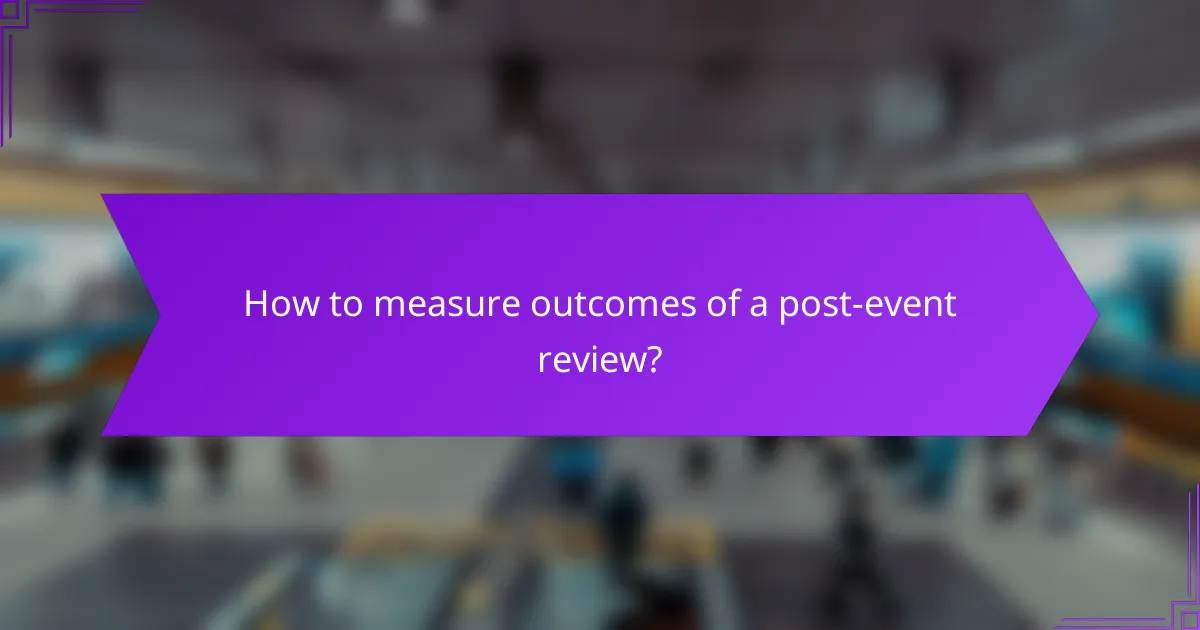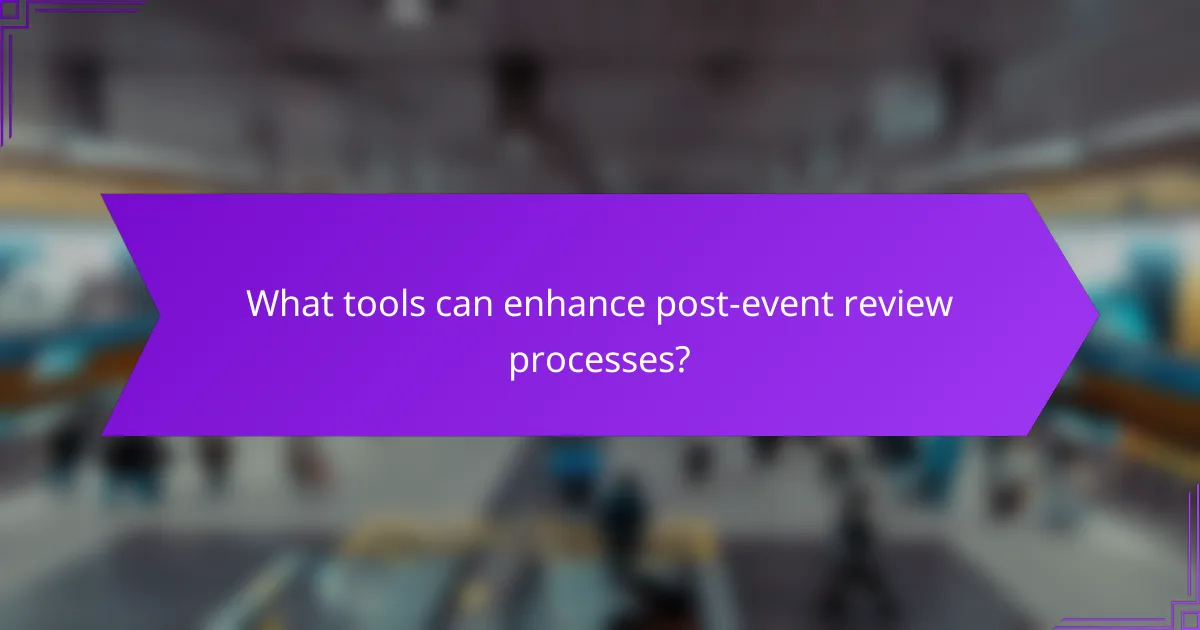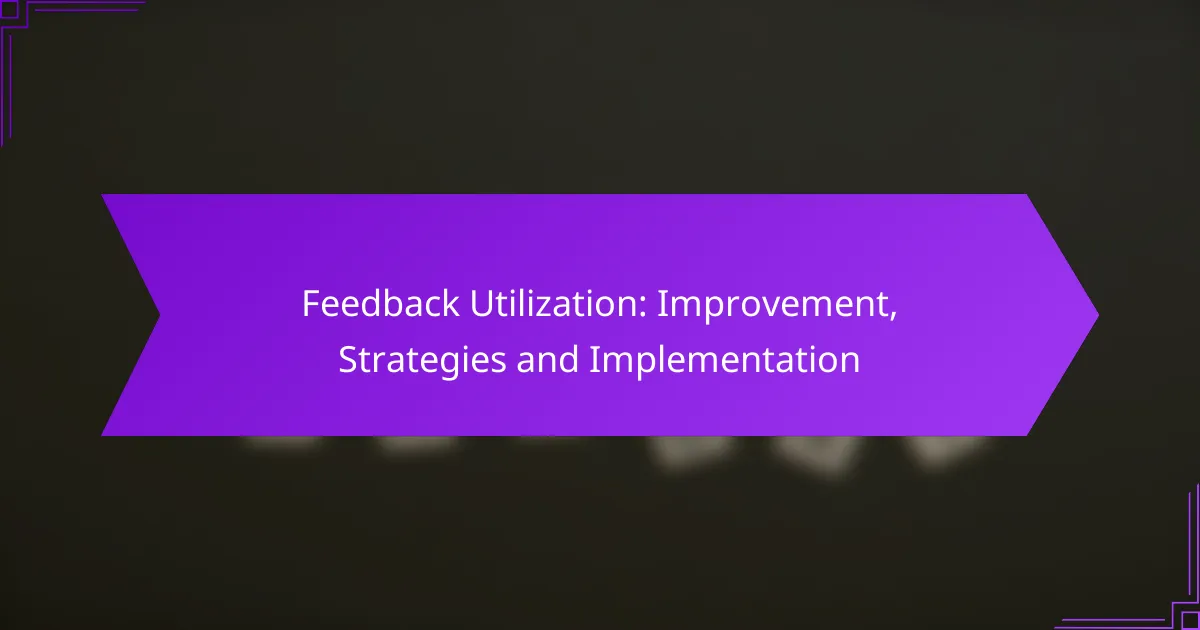A post-event review is essential for organizations to evaluate the success of their events and identify opportunities for improvement. By following key steps such as defining objectives, gathering feedback, and analyzing data, organizations can gain valuable insights. Implementing best practices ensures a thorough evaluation, while measuring outcomes helps assess attendee satisfaction and the overall impact of the event.

What are the key steps in a post-event review?
The key steps in a post-event review include defining objectives, gathering feedback, analyzing data, documenting findings, and sharing insights. These steps help organizations assess the event’s success and identify areas for improvement.
Define objectives
Start by clarifying the objectives of the event. This involves determining what success looks like, such as attendee satisfaction, revenue targets, or engagement levels. Clear objectives provide a framework for evaluating outcomes.
Consider using the SMART criteria—Specific, Measurable, Achievable, Relevant, and Time-bound—to set these objectives. This ensures that goals are realistic and aligned with overall organizational aims.
Gather feedback
Collect feedback from various stakeholders, including attendees, staff, and sponsors. Surveys, interviews, and focus groups are effective methods for gathering diverse perspectives on the event’s execution and impact.
Utilize both quantitative and qualitative feedback. For example, numerical ratings can highlight satisfaction levels, while open-ended responses can reveal deeper insights into attendee experiences.
Analyze data
Review the collected feedback and any relevant data, such as attendance numbers and budget reports. Look for trends and patterns that indicate strengths and weaknesses in the event’s planning and execution.
Use data visualization tools to present findings clearly. Charts and graphs can help stakeholders quickly grasp key insights and make informed decisions for future events.
Document findings
Compile a comprehensive report that outlines the objectives, feedback, data analysis, and conclusions. This document serves as a reference for future events and helps maintain organizational knowledge.
Ensure that the report is structured and easy to navigate. Include sections for key takeaways, recommendations, and any lessons learned to facilitate future planning.
Share insights
Disseminate the findings to all relevant stakeholders, including team members, management, and sponsors. Sharing insights fosters transparency and encourages collaboration in improving future events.
Consider hosting a debrief meeting to discuss the report and gather additional input. This collaborative approach can lead to innovative ideas and solutions for upcoming events.

What are best practices for conducting a post-event review?
Best practices for conducting a post-event review include engaging relevant stakeholders, utilizing surveys effectively, focusing on actionable insights, and establishing a clear timeline for the review process. These steps ensure a comprehensive evaluation that can enhance future events.
Involve stakeholders
Involving stakeholders is crucial for a thorough post-event review. This includes team members, sponsors, and attendees who can provide diverse perspectives on the event’s success and areas for improvement.
To engage stakeholders, consider scheduling a debrief meeting or sending out invitations for feedback sessions. This collaborative approach fosters a sense of ownership and can lead to more constructive feedback.
Use surveys effectively
Surveys are a powerful tool for gathering quantitative and qualitative feedback from participants. Craft questions that are clear and focused, using a mix of multiple-choice and open-ended formats to capture a range of insights.
Distributing surveys shortly after the event increases response rates. Aim for a completion time of under 10 minutes to encourage participation. Consider offering incentives, such as discounts on future events, to boost engagement.
Focus on actionable insights
Actionable insights are the cornerstone of a successful post-event review. Analyze the feedback to identify specific areas for improvement, such as logistics, content delivery, or attendee engagement.
Prioritize insights that can lead to tangible changes in future events. For instance, if attendees suggest longer networking sessions, consider adjusting the schedule to accommodate this feedback.
Set a timeline for review
Establishing a timeline for the post-event review process is essential for maintaining momentum. Aim to complete the review within a few weeks of the event to ensure that feedback is fresh and relevant.
Break the review process into stages, such as collecting feedback, analyzing data, and implementing changes. Assign specific deadlines for each stage to keep the team accountable and focused on continuous improvement.

How to measure outcomes of a post-event review?
Measuring outcomes of a post-event review involves evaluating attendee feedback, assessing the achievement of event goals, and analyzing return on investment (ROI) metrics. These steps provide a comprehensive understanding of the event’s success and areas for improvement.
Evaluate attendee satisfaction
To evaluate attendee satisfaction, gather feedback through surveys or interviews immediately after the event. Focus on key aspects such as content quality, speaker effectiveness, and overall experience.
Consider using a Likert scale for responses, which allows attendees to rate their satisfaction from “very dissatisfied” to “very satisfied.” Aim for a response rate of at least 30% to ensure reliable insights.
Assess event goals achievement
Assessing event goals involves comparing the outcomes against the objectives set prior to the event. Determine if the event met its primary goals, such as increasing brand awareness, generating leads, or fostering networking opportunities.
Utilize metrics like attendance numbers versus target figures, engagement levels during sessions, and follow-up actions taken by attendees to evaluate success. Document any discrepancies to inform future planning.
Analyze ROI metrics
Analyzing ROI metrics requires calculating the financial return on the event compared to its costs. Include direct expenses like venue rental, catering, and marketing, alongside indirect costs such as staff time.
A common formula for ROI is: (Net Profit / Total Event Costs) x 100. Aim for a positive ROI, ideally in the range of 20-30%, to justify the investment in future events. Consider both tangible and intangible benefits when assessing overall value.

What tools can enhance post-event review processes?
Several tools can significantly improve post-event review processes by streamlining feedback collection, data analysis, and task management. Utilizing the right software can help teams gather insights, assess performance, and plan for future events more effectively.
SurveyMonkey for feedback
SurveyMonkey is a powerful tool for collecting feedback from event attendees. It allows you to create customized surveys that can gauge participant satisfaction, gather suggestions, and identify areas for improvement.
To maximize the effectiveness of your surveys, consider using a mix of multiple-choice questions and open-ended responses. Aim for a completion rate of at least 30-50% by keeping surveys concise and relevant to the event experience.
Google Analytics for data analysis
Google Analytics provides valuable insights into attendee behavior and engagement during your event. By tracking metrics such as page views, session duration, and user demographics, you can assess the effectiveness of your event marketing and content.
Set up goals and conversion tracking to measure specific actions, like registrations or downloads. Regularly review this data in the weeks following the event to identify trends and inform future strategies.
Trello for task management
Trello is an excellent tool for managing tasks and coordinating team efforts during the post-event review process. Its visual boards and cards make it easy to assign responsibilities, track progress, and set deadlines.
To enhance collaboration, create separate boards for different aspects of the review, such as feedback analysis, data reporting, and action item follow-ups. Regularly update the boards to keep the team aligned and accountable for their tasks.



